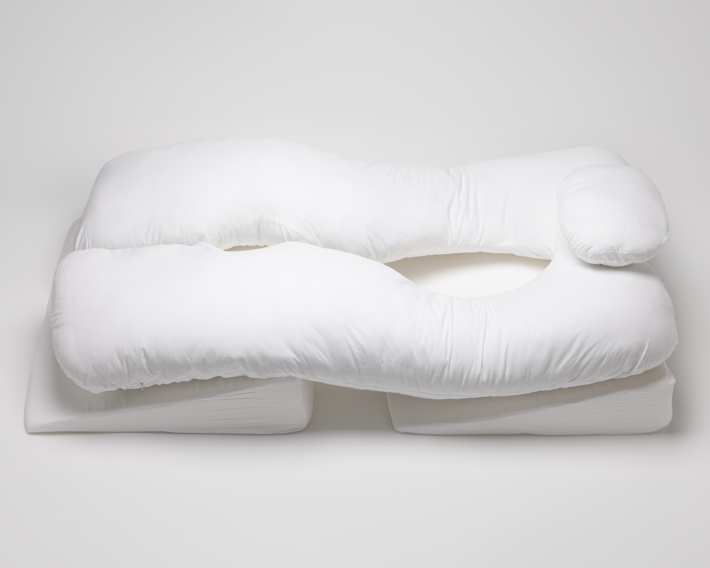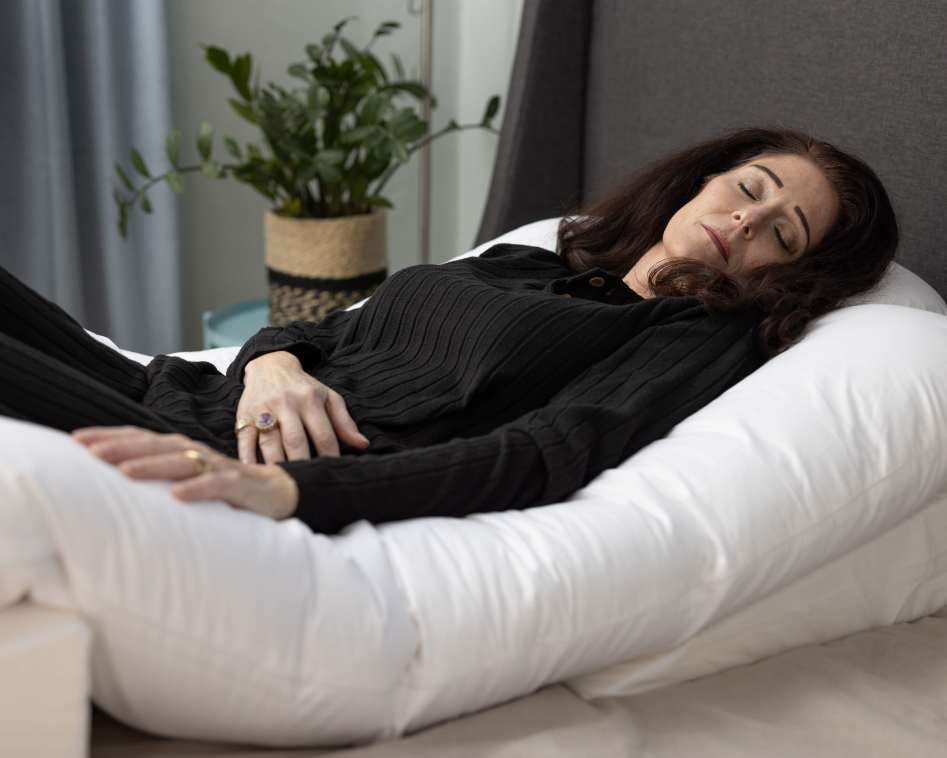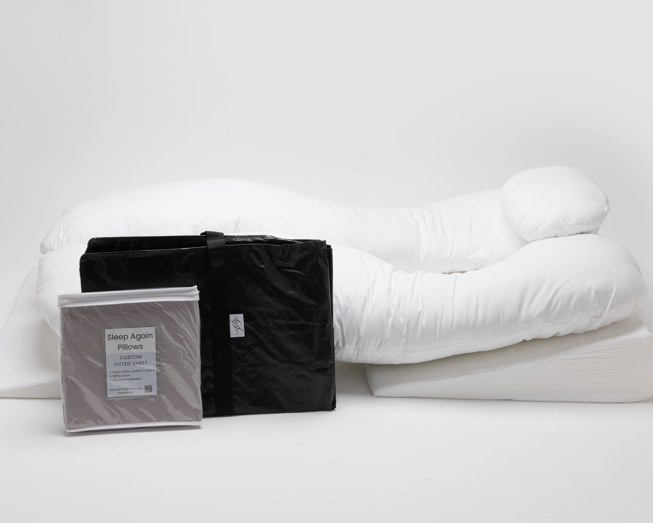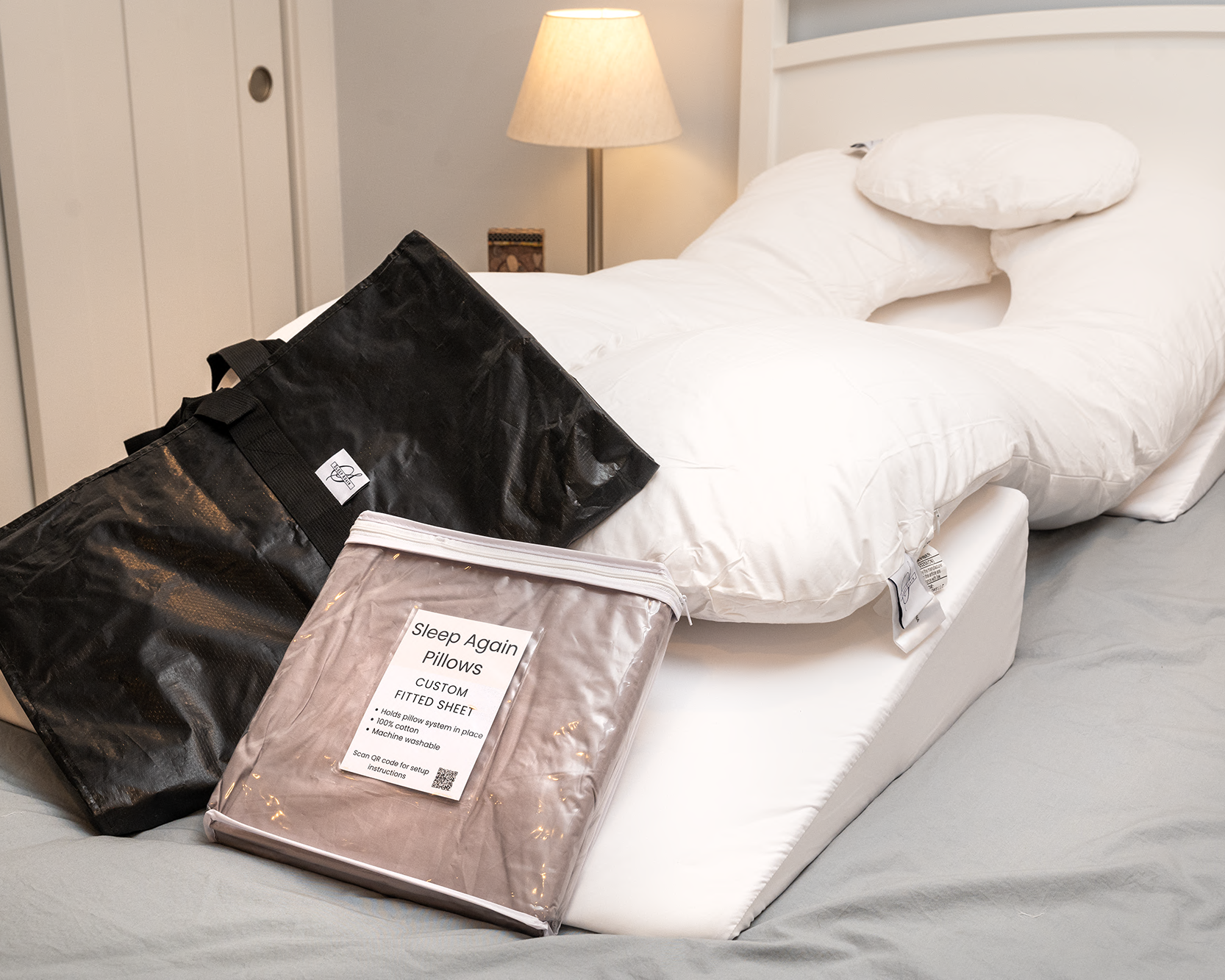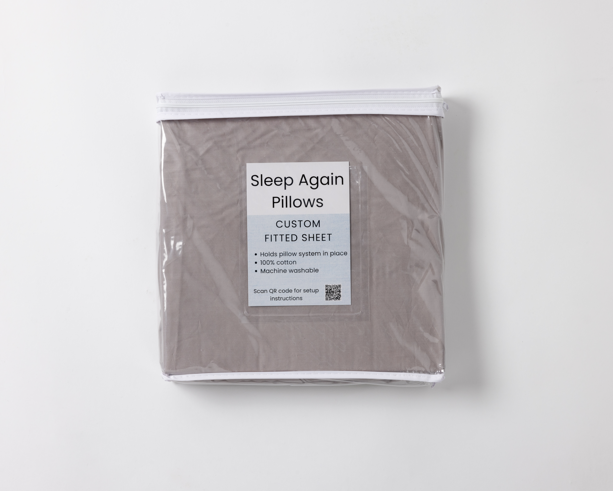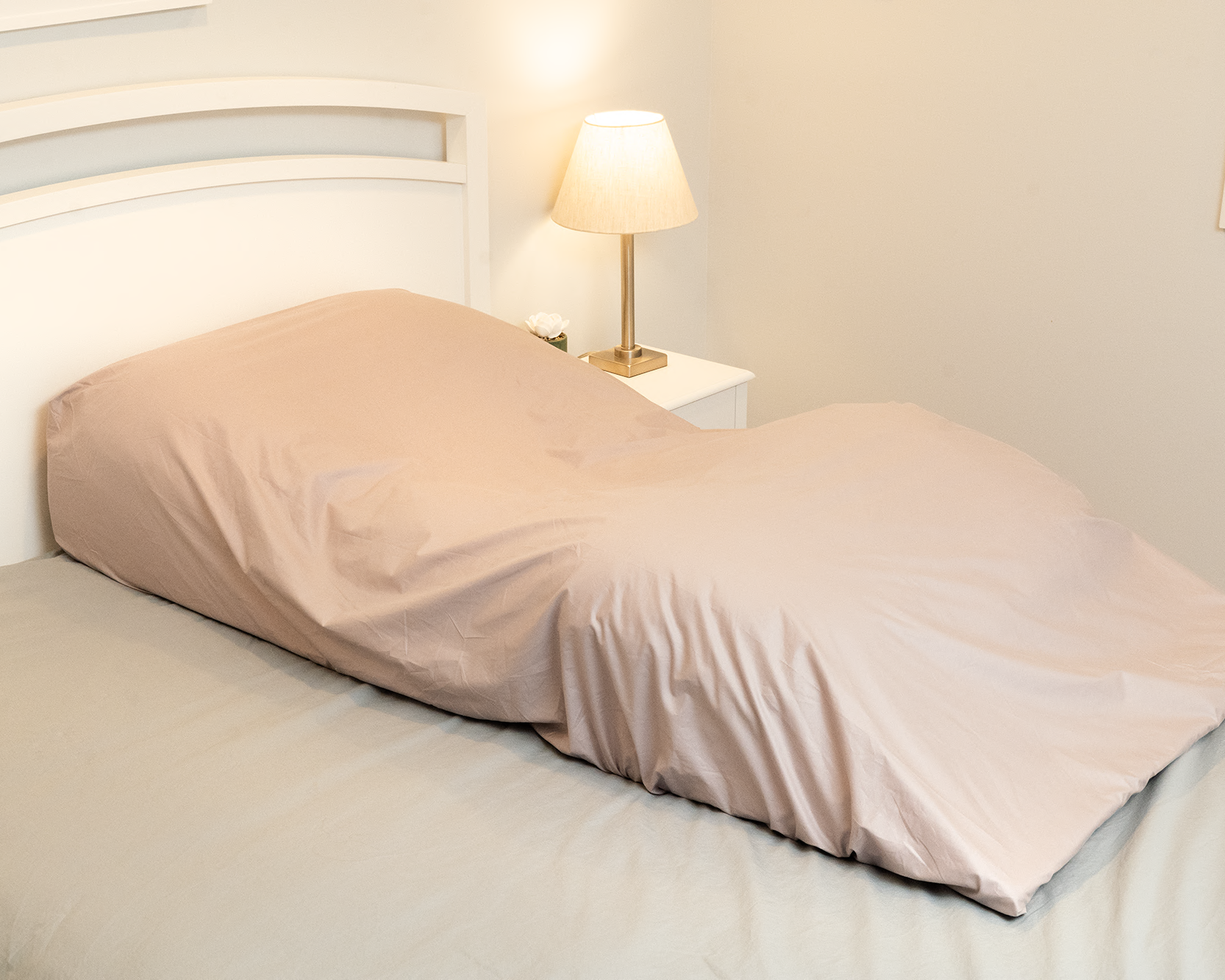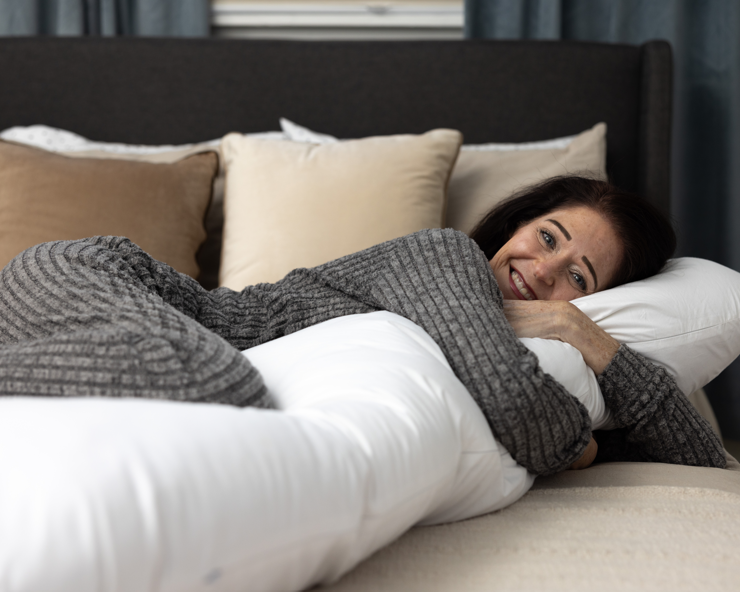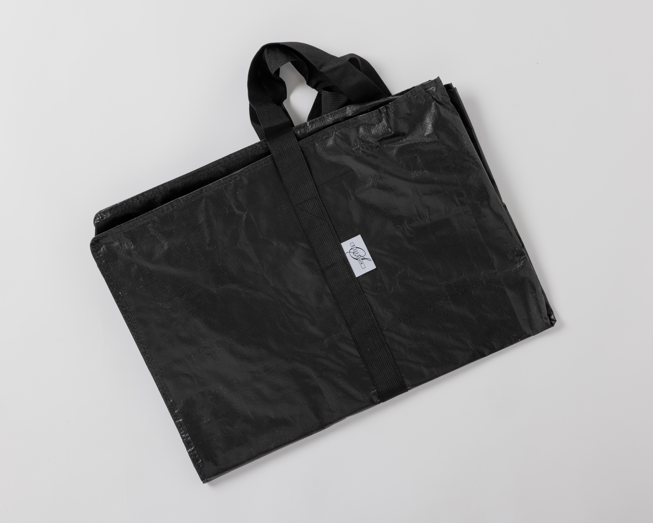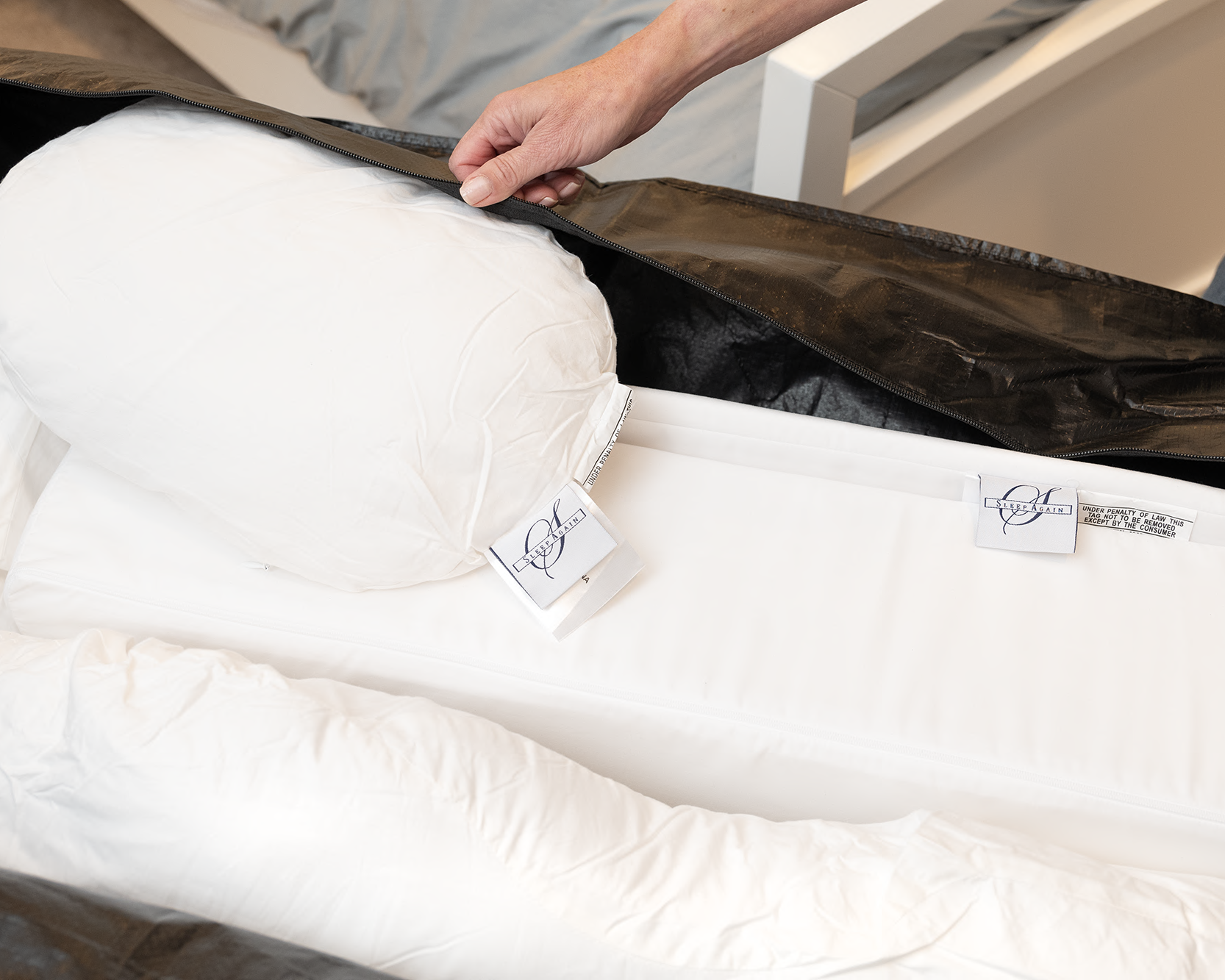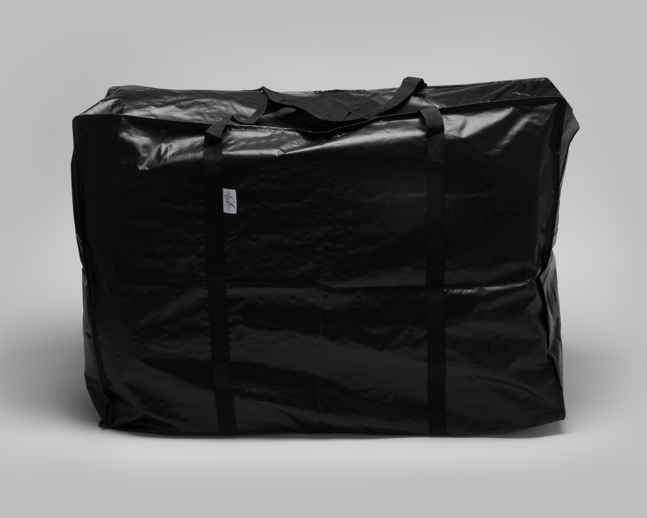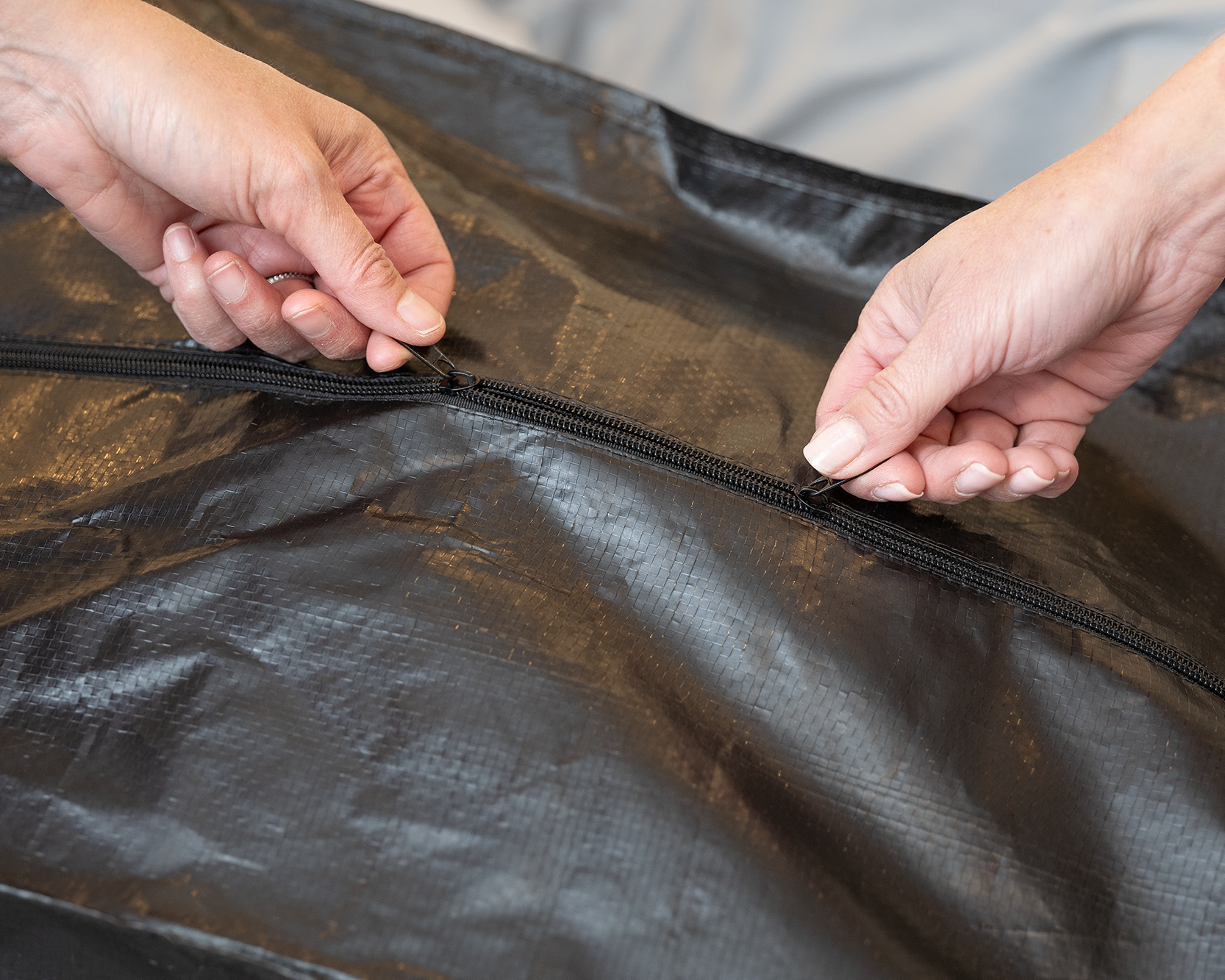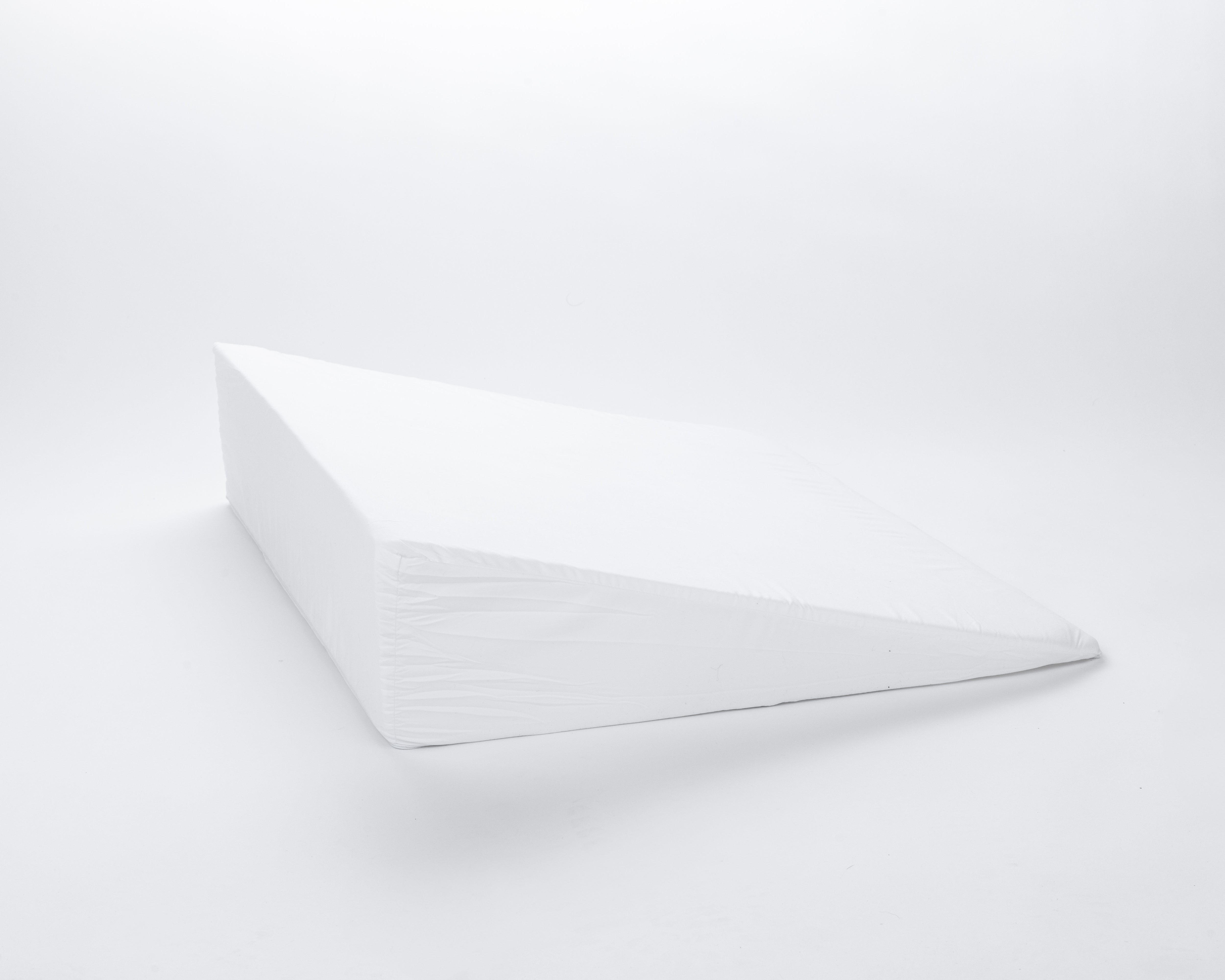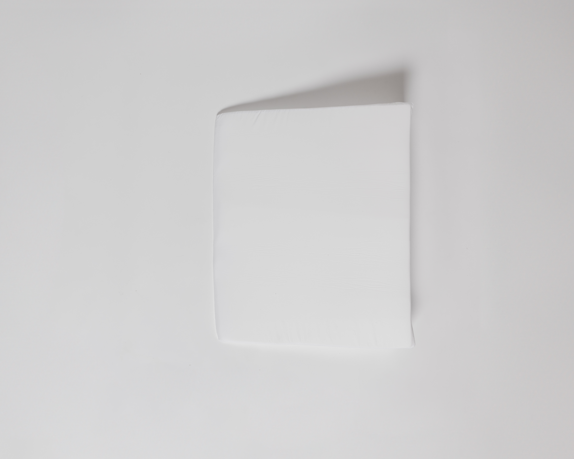Shoulder surgery recovery presents a unique challenge that other surgeries simply don't: your arm needs to stay still, but your arm is also essential for getting comfortable in bed. Whether you've undergone rotator cuff repair, shoulder replacement, or labral surgery, you're probably discovering that sleep has become a complex balancing act between protecting your healing shoulder and actually getting rest.
The shoulder joint's extensive range of motion—the same feature that makes it so versatile during daily activities—becomes a liability during recovery. Every sleep position you've ever used somehow involves your shoulder, and now that shoulder has very specific requirements that conflict with natural sleep mechanics.
What makes shoulder surgery sleep challenges particularly frustrating is that solutions that work for other post-surgical patients often don't apply. Back surgery patients can often side sleep comfortably, hip surgery patients can use their arms freely, but shoulder surgery affects your body's primary stabilizing points during sleep.
This guide addresses the specific sleep obstacles that shoulder surgery creates and provides targeted solutions that work within the constraints of shoulder recovery, helping you achieve genuine rest while protecting your repair.
Why Is Sleeping After Shoulder Surgery So Complicated?
Shoulder surgery sleep difficulties stem from three core anatomical realities that create a perfect storm of positioning challenges.
Your Shoulder Is a Sleep Architecture Foundation
During normal sleep, your shoulders serve as primary contact points that support various sleeping positions. They anchor side sleeping, stabilize back sleeping arm positions, and enable position changes throughout the night. After surgery, one of these foundational points becomes off-limits, requiring complete re-engineering of your sleep approach.
The Shoulder's Movement Requirements Create Position Conflicts
Most shoulder surgeries require some degree of immobilization or movement restriction that directly conflicts with natural sleep positioning. The healing tissue needs protection from weight-bearing and stress, but nearly every comfortable sleep position puts some form of demand on shoulder structures.
Shoulder Pain Follows Unique Patterns
Unlike other surgical sites, shoulder pain often intensifies when lying down due to changes in joint mechanics and fluid distribution. The shoulder joint's position relative to the heart affects circulation patterns, and inflammatory responses peak during periods of inactivity—creating a scenario where rest triggers discomfort.

What's the Best Way to Sleep After Shoulder Surgery?
The optimal sleep approach after shoulder surgery prioritizes shoulder protection through proper elevation and support. Here are the proven positions that work within shoulder surgery constraints, ranked by effectiveness for most patients.
Elevated Back Sleeping: The Shoulder Surgery Gold Standard
Elevated back sleeping provides the best combination of shoulder protection, pain management, and sleep quality for most shoulder surgery patients. This position eliminates weight-bearing on the surgical site while providing optimal support for healing.
Why Elevated Back Sleeping Works Best for Shoulder Recovery:
Elevated back sleeping works with gravity to reduce swelling around your surgical site while keeping your healing shoulder completely protected from pressure and weight. When you're properly elevated, inflammatory fluids drain naturally away from the shoulder, reducing morning stiffness and accelerating healing. This position also allows both arms to be supported equally, preventing the operated shoulder from feeling isolated or unstable.

Creating Your Back Sleeping Set Up with the Sleep Again Pillow System
The Sleep Again Pillow System addresses the unique demands of shoulder surgery recovery through integrated components designed specifically for elevated back sleeping and comprehensive arm support:
Every Sleep Again Pillow System includes:
-
Two Contoured Side Pillows to cradle back and hips
-
Upper Body Wedge to create optimal upper body incline
-
Leg Support Wedge to gently elevate legs
-
Head Pillow to provide head support and neck mobility
-
Removable, washable slipcovers for every piece
Why This System Excels for Elevated Back Sleeping:
Stable Elevation: The Upper Body Wedge maintains precise 35-45 degree angles throughout the night, unlike stacked pillows that compress and shift, ensuring consistent shoulder protection and drainage.
Comprehensive Arm Support: The integrated design allows for bilateral arm support that keeps your operated shoulder feeling secure and protected while maintaining natural positioning.
Rolling Prevention: The Contoured Side Pillows serve as effective barriers that prevent unconscious rolling onto either side, protecting your healing shoulder from accidental pressure.
Measurement Precision: Traditional pillows lose 30-40% of their height overnight. Sleep Again Pillow System components maintain precision positioning, crucial for maintaining arm support throughout sleep.
SHOP THE BEST PILLOW FOR SHOULDER SURGERY RECOVERY
Strategic Side Sleeping: When Back Sleeping Needs a Break
When elevated back sleeping becomes uncomfortable, carefully executed side sleeping on your non-operated side can provide positional relief while maintaining shoulder protection.
Essential Side Sleeping Setup:
-
Sleep only on the side opposite your surgery
-
Create a comprehensive support system for your operated arm using pillows positioned in front of your body
-
Install a firm barrier behind your back to prevent rolling onto the operated side
-
Use knee support to maintain spinal alignment
Critical Timeline: Side sleeping should only be attempted after the first 2-3 weeks of recovery and never on the operated side until cleared by your surgeon (typically 8-12 weeks minimum).
Recliner Positioning: Short-Term Relief Option
Recliner sleeping serves as a temporary solution during the immediate post-surgical period when even elevated back sleeping may be too uncomfortable.
When Recliner Sleep Makes Sense:
-
First 7-10 days post-surgery when pain and swelling are most severe
-
Breakthrough pain episodes that prevent bed comfort
-
Significant swelling that makes any lying position uncomfortable
Recliner Optimization: Ensure comprehensive arm support using pillows, maintain proper neck alignment, and plan to transition to bed-based positioning as soon as comfort allows.
Which Sleep Positions Will Hurt My Recovery?
Operated Side Sleeping: The Primary Risk
Sleeping on your operated side places direct weight and pressure on healing tissues, potentially disrupting repair work and causing significant pain. This position also restricts circulation to the surgical area and can stress sutures or implants.
Timeline for operated side clearance: Most surgeons restrict operated side sleeping for 8-12 weeks minimum, with longer restrictions for complex repairs.
Unsupported Arm Positions
Allowing your operated arm to hang unsupported—whether in back sleeping or side sleeping—creates stress on healing structures. The weight of your arm can pull on surgical sites even when you're not bearing weight on the shoulder directly.
Flat Back Sleeping Without Elevation
Completely flat back sleeping often increases shoulder stiffness and can worsen swelling. The lack of elevation prevents optimal drainage and can make your shoulder feel "trapped" against the mattress.
Prone (Stomach) Sleeping
Stomach sleeping requires extensive shoulder rotation and often forces arm positioning that stresses the surgical site. This position also typically requires neck rotation that can create secondary tension affecting shoulder comfort.

What Specific Equipment Do I Need for Shoulder Surgery Sleep?
Understanding Shoulder Surgery Equipment Needs
Shoulder surgery sleep equipment needs differ significantly from general post-surgical requirements because of the arm support and positioning demands that other surgeries don't create.
Critical Equipment Categories:
Arm Support Systems: Equipment that maintains operated arm positioning throughout the night without compression or shifting.
Rolling Prevention Tools: Barriers that prevent unconscious movement onto the operated side during sleep.
Elevation Solutions: Systems that provide stable upper body elevation when needed for comfort or swelling management.
Equipment Priorities for Different Recovery Phases
Weeks 1-4: Maximum Protection Equipment
-
Primary focus on stable elevation systems for back sleeping
-
Comprehensive arm support that maintains positioning throughout the night
-
Rolling prevention barriers to protect healing tissues
-
Easy-access organization for pain medication and essentials
Weeks 5-8: Comfort Optimization Equipment
-
Continued elevation with possible angle adjustments for increased comfort
-
Flexible positioning options for occasional side sleeping
-
Maintained arm support with gradual position freedom
Weeks 9+: Transition Equipment
-
Reduced elevation requirements while maintaining optimal comfort
-
Equipment that supports return to normal positions
-
Long-term comfort improvements that extend beyond recovery
How Do I Manage Sleep When My Partner Is Affected?
Partner Sleep Considerations Unique to Shoulder Surgery
Shoulder surgery often requires more bed space and positioning equipment than other surgeries, which can significantly impact partner sleep. Additionally, the arm support systems needed can create barriers that affect bed sharing.
Space Management Strategies:
Temporary Bed Arrangement: Consider temporarily sleeping in separate beds during the first 4-6 weeks when positioning requirements are most demanding.
Bed Size Upgrade: If separate sleeping isn't feasible, a larger bed can accommodate the additional pillows and positioning equipment needed for shoulder recovery.
Equipment Positioning: The Sleep Again Pillow System can be set up to minimize partner disruption while maintaining necessary support.
Communication and Expectation Setting
Clear Timeline Discussion: Help your partner understand that sleep modifications are temporary but necessary for proper healing.
Role Definition: Determine how your partner can assist with setup and positioning without compromising their own sleep quality.
Backup Plans: Establish alternative arrangements for nights when pain or discomfort makes shared sleeping particularly difficult.
How Long Will I Need Modified Sleep Positions?
Shoulder Surgery Recovery Sleep Timeline
Weeks 1-3: Intensive Protection Phase
-
Primary focus on elevated back sleeping with comprehensive arm support
-
Maximum use of elevation and barrier systems to protect healing tissues
-
Expect 6-8 position adjustments per night as you adapt to elevated sleeping
Weeks 4-6: Stabilization Phase
-
Continued elevated back sleeping with possible reduction in elevation angle
-
Introduction of brief side sleeping periods on non-operated side if comfortable
-
Reduction in nighttime wake-ups as elevated positioning becomes more natural
Weeks 7-10: Gradual Expansion Phase
-
Primary elevated back sleeping with increased flexibility in positioning
-
Extended periods of non-operated side sleeping as comfort allows
-
Possible brief periods on operated side if cleared by surgeon
Weeks 11-16: Progressive Normalization Phase
-
Continued use of elevation for optimal comfort and drainage
-
Progressive return to preferred pre-surgery sleep positions
-
Many patients continue some elevation permanently for improved sleep quality
Individual Variation Factors:
-
Surgery type and complexity significantly affect timeline
-
Age and overall health influence adaptation speed
-
Pre-surgery sleep habits impact adjustment difficulty
-
Pain tolerance and healing rate vary between individuals

How the Sleep Again Pillow System Prevents Shoulder Surgery Sleep Issues
Problem: Sliding Down During Sleep - Many shoulder surgery patients struggle with traditional wedge pillows that lack proper grip, causing them to gradually slide down from their elevated position throughout the night, disrupting healing sleep and requiring constant repositioning.
Solution: The Sleep Again Pillow System features enhanced stability design that keeps you securely positioned all night long.
Problem: Arm Numbness and Poor Circulation - Inadequate arm support during elevated sleeping often leads to numbness, tingling, and circulation issues as arms bear unnatural weight or get compressed by poorly designed pillows that shift during sleep.
Solution: The Sleep Again Pillow System provides precisely positioned bilateral arm support that cradles without compressing, maintaining proper circulation and comfort throughout the night.
Problem: Accidental Rolling to the Surgical Side - One of the biggest fears after shoulder surgery is accidentally rolling onto the operated side during sleep, which can cause severe pain, damage healing tissue, and set back recovery progress.
Solution: The Sleep Again Pillow System creates an effective barrier system that prevents dangerous rolling while maintaining comfort, giving you peace of mind for safer healing sleep.
This approach transforms reactive troubleshooting into proactive problem-solving, positioning your product as the preventative solution rather than just a fix for existing issues.
Problem: Lower Back Pain from Elevation - Traditional elevation methods often create sharp angles that strain the lower back, forcing patients to choose between proper shoulder positioning and spinal comfort, leading to additional pain during recovery.
Solution: The Sleep Again Pillow System is designed with gradual incline angles and includes knee elevation support to maintain proper spinal alignment, eliminating lower back discomfort while keeping your shoulder properly positioned.
SHOP THE BEST PILLOW FOR SHOULDER SURGERY
Advanced Comfort Strategies
Pre-Sleep Preparation Routine:
-
Complete positioning setup before taking pain medication
-
Perform approved gentle range-of-motion exercises for non-affected areas
-
Use ice therapy on shoulder 1 hour before sleep (remove before bed)
-
Practice relaxation techniques that don't require arm movement
Environmental Optimization:
-
Use blackout curtains to prevent early morning light disruption
-
Consider white noise to mask sounds from position adjustments
-
Keep essentials within reach of non-operated arm to minimize movement
When Should I Contact My Healthcare Provider About Sleep Issues?
Sleep-Related Warning Signs After Shoulder Surgery
Immediate Medical Attention Required:
-
Sudden increase in shoulder pain during sleep that doesn't respond to position changes
-
New numbness or tingling in fingers that persists after repositioning
-
Signs of infection around surgical site (increased redness, warmth, discharge)
-
Complete inability to sleep for more than 48 hours
Schedule Follow-Up Discussion:
-
Persistent sleep difficulties that don't improve after 2 weeks of proper positioning
-
Questions about progressing to different sleep positions ahead of scheduled timeline
-
Concerns about pain medication effectiveness for sleep management
-
Sleep problems that significantly impact daily functioning or mood
Questions to Prepare for Healthcare Visits
Sleep Quality Assessment:
-
How many hours of sleep are you getting per night?
-
How often do you wake up due to shoulder discomfort?
-
Which positions provide the most relief?
-
Are sleep problems affecting your daytime activities?
Position and Equipment Evaluation:
-
What positioning equipment are you currently using?
-
Have you been able to sleep on your non-operated side?
-
Are you following the elevation recommendations?
-
Do you need assistance with sleep setup?

What's the Most Effective Sleep System for Shoulder Surgery?
Comparing Sleep Support Options
Individual Pillow Approach:
-
Setup time: 15-20 minutes nightly for proper arrangement
-
Stability: Frequent readjustment needed as pillows shift and compress
-
Cost: $150-300 for various pillows, many unused after recovery
-
Effectiveness: Trial and error process with inconsistent results
Sleep Again Pillow System Approach:
-
Setup time: 2-3 minutes once learned
-
Stability: Maintains positioning throughout the night
-
Cost: Complete integrated system designed for post-surgical recovery
-
Effectiveness: Proven positioning designed specifically for recovery needs
Professional Recommendations: Physical therapists and orthopedic surgeons increasingly recommend the Sleep Again Pillow System because it addresses the specific arm support and rolling prevention challenges unique to shoulder surgery recovery.
Long-Term Value Considerations
Quality sleep support systems provide benefits that extend beyond the recovery period. Many patients continue using elevation and support elements for improved overall sleep quality, making the investment valuable beyond the immediate post-surgical needs.
The Sleep Again Pillow System components can be used by other family members or repurposed for other health conditions requiring elevation or specialized positioning.
Frequently Asked Questions About Shoulder Surgery Sleep
How soon after surgery can I sleep in my own bed?
Most patients can sleep in their own bed immediately after surgery with proper positioning equipment. The key is having the right support systems in place before your first night home.
Can I sleep in a recliner instead of using positioning pillows?
Recliners work well for brief resting during the first 1-2 weeks, but most patients achieve better long-term sleep quality in bed with proper positioning systems once the initial discomfort subsides.
What if I accidentally roll onto my operated side during sleep?
Brief contact is unlikely to cause damage, but consistent pressure should be avoided. Focus on improving your barrier system to prevent unconscious rolling.
When can I sleep on my operated side again?
Timeline varies by surgery type, but most patients receive clearance around 8-12 weeks post-surgery. Rotator cuff repairs typically require longer restrictions than arthroscopic procedures.
Should I sleep with my sling on?
Follow your surgeon's specific instructions. Some recommend sling use during sleep for the first few weeks, while others prefer alternative positioning methods.
Is it normal to need more sleep during recovery?
Yes, healing requires additional energy and many patients need 1-2 extra hours of sleep per night during the first month of recovery.
Will I ever sleep normally again?
Most patients return to their preferred sleep positions within 3-4 months, though many discover that some elements of recovery positioning (like slight elevation) improve their long-term sleep quality.
Essential Guidelines for Successful Sleep After Shoulder Surgery
Successful sleep during shoulder surgery recovery requires a different approach than other post-surgical situations. The combination of arm support needs, rolling prevention requirements, and gradual position progression creates unique challenges that demand specific solutions.
The investment in proper positioning equipment—particularly systems designed specifically for post-surgical recovery like the Sleep Again Pillow System—typically provides value far beyond the recovery period through improved sleep quality and comfort.
Focus on consistency in your approach, be patient with the adaptation process, and don't hesitate to adjust your positioning setup as your recovery progresses. Quality sleep is essential for optimal healing, and the temporary modifications you make during recovery can have lasting positive effects on your sleep health.
Medical Disclaimer
This information is for educational purposes only and should not replace professional medical advice. Sleep position recommendations may vary significantly based on your specific surgical procedure, overall health status, and individual recovery circumstances. Always follow your surgeon's specific post-operative instructions regarding sleep positions and activity restrictions.
Different types of shoulder surgery—including rotator cuff repair, shoulder replacement, labral repair, and arthroscopic procedures—may have varying positioning requirements and recovery timelines. If you experience unusual pain, swelling, numbness, or other concerning symptoms, contact your healthcare provider immediately.


